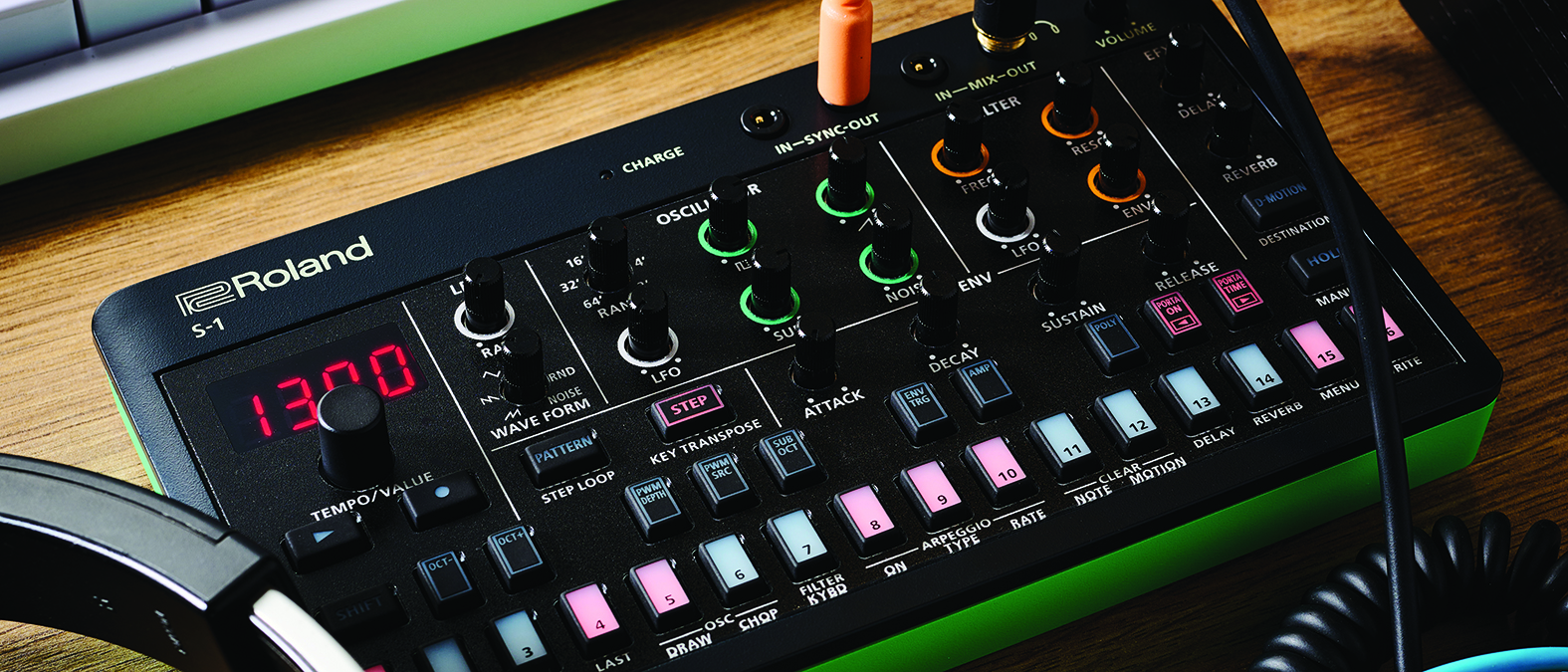MusicRadar Verdict
Deceptively handy and inventive, the S-1 is a great starter synth and much more than just another retro revival from Roland.
Pros
- +
Compact, highly portable with convenient USB connectivity.
- +
Solid virtual analogue sound enhanced by inventive wave-shaping tools.
- +
Deceptively powerful sequencer with probability and parameter automation.
Cons
- -
Controls can be a little fiddly.
- -
Several significant functions are hidden in menus.
- -
No MIDI adapters in the box.
MusicRadar's got your back
Roland S-1 Tweak Synthesizer: What is it?
The S-1 is the latest addition to Roland’s, ultra-portable Aira Compact range. It’s labelled a ‘Tweak Synthesizer’ by Roland, a name that we’d assume alludes to the idea that users will want to ‘tweak’ its parameter controls, but whether the S-1 qualifies as any more or less ‘tweakable’ than other synths is debatable (particularly given that its size necessitates small controls and menu diving).
Nomenclature aside, this is a 4-voice virtual analogue polysynth based loosely on the design of the classic SH-101. The core sound engine is designed to match that of the 101, using Roland’s Analog Circuit Behavior tech to emulate the key synthesis elements. That signal flow breaks down into oscillator and filter sections, combined with a single LFO and ADSR envelope that handle pitch, filter and amp modulation between them.
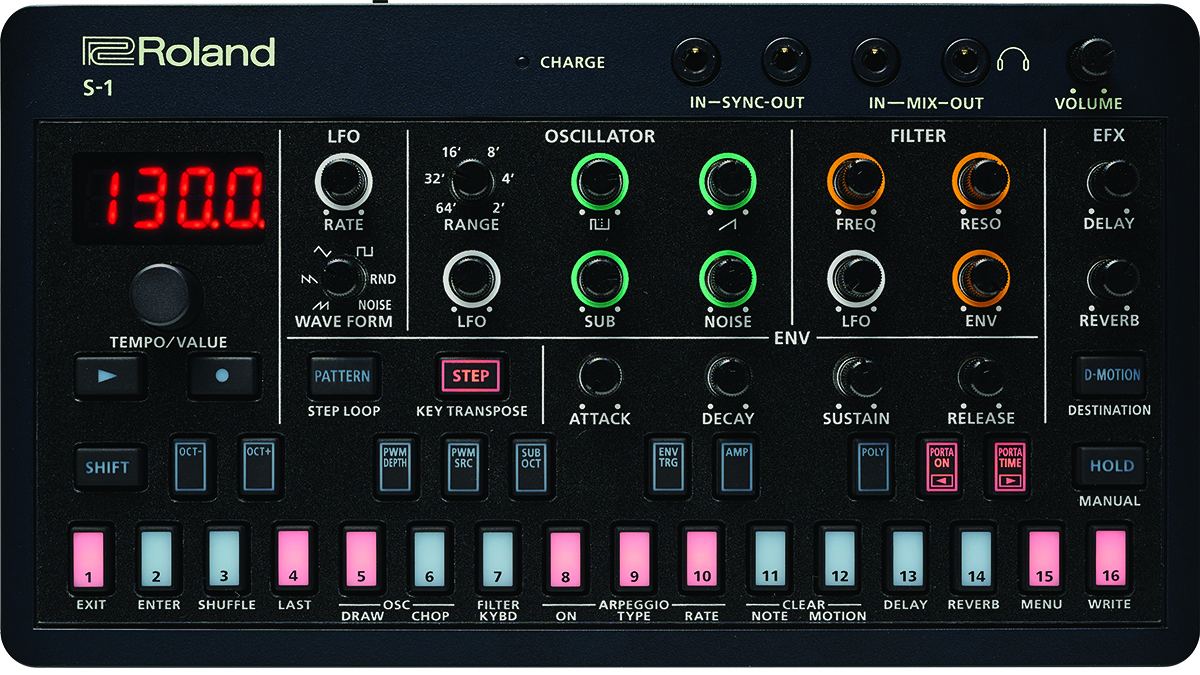
Patch and tweak
For a pocket-sized synth, the S-1 packs a decent level of connectivity. The front panel has four mini-jack ports. One of these is the sole audio output, joined by an audio input that bypasses the synth engine and is mixed directly into the output. The other two front panel connections are analogue pulse sync in and out ports.
On the rear panel are USB-C and TRS MIDI in and out ports. As is increasingly common, it’s a shame the required adapters for these MIDI ports aren’t included in the box, but this is compensated for by the flexibility of the USB connection. The S-1 is powered by an internal rechargeable battery with a 4.5-hour life, so the USB port functions for charging, as well as sending MIDI and audio signals.
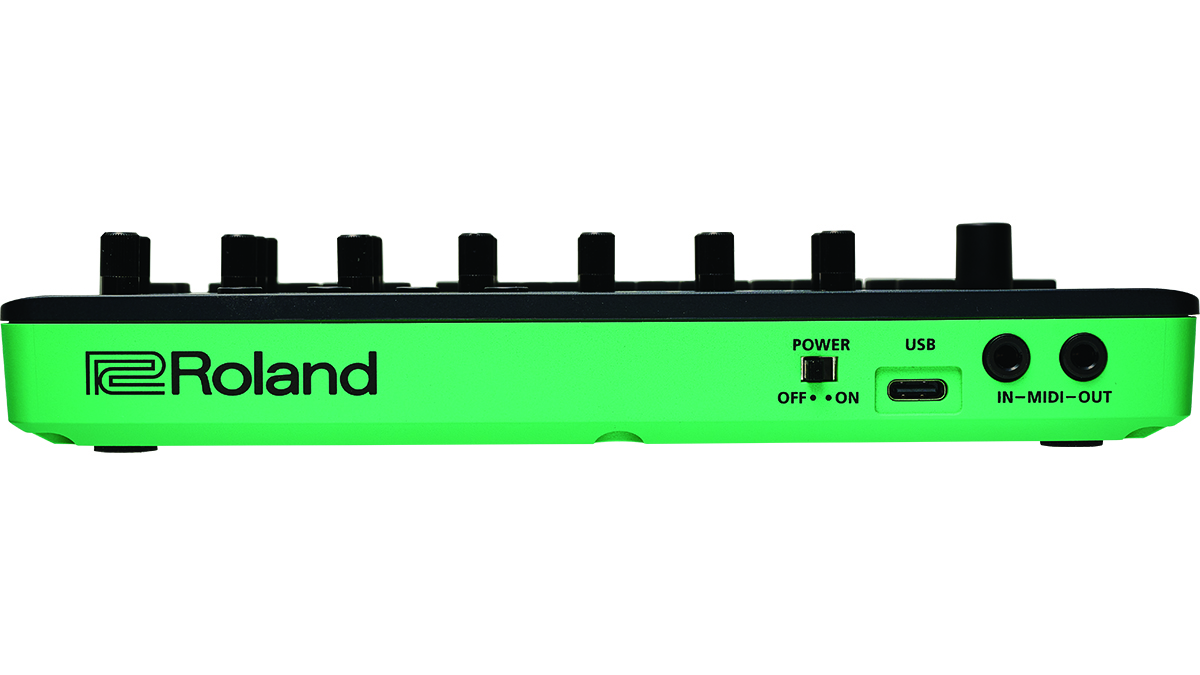
Roland S-1 Tweak Synthesizer: Performance and verdict
The oscillator has four waves – saw, square with modulatable pulse width, a sine sub and noise, all of which can be used simultaneously and combined. The oscillator has a range control for altering the course tuning and a rotary for applying pitch modulation from the LFO. The filter is a resonant 24db low-pass filter with front panel controls to engage modulation from the LFO or envelope. Along with their front panel assignments both the LFO and envelope can be routed to modulate the oscillator pulse width, but doing so requires diving into a secondary menu.
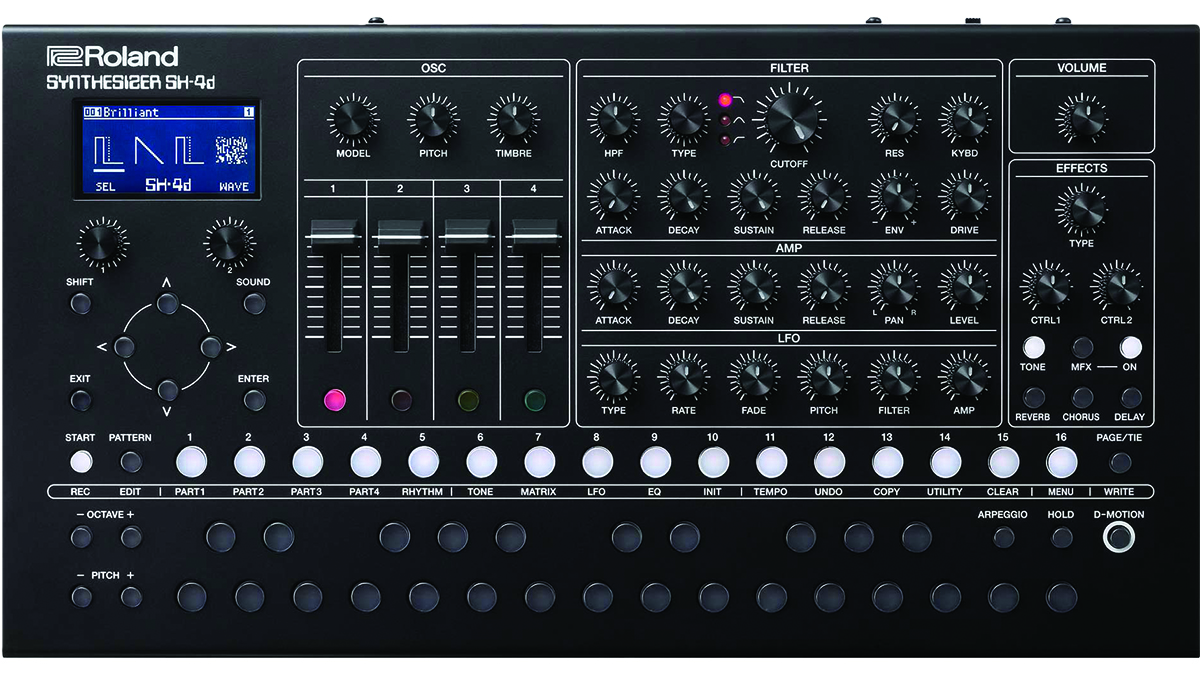
• Roland SH-4d
Many of the features here, such as wave drawing and D-Motion, also appeared in Roland’s excellent, multifaceted groovebox.
• Korg Volca Keys
Korg’s analogue Volca keys is a similarly-priced 4-voice poly, albeit with more eccentricities and less of the flexibility that comes with a digital engine.
• Arturia MicroFreak
MicroFreak is larger and slightly pricier, but doubles down on the oddball digital sound shaping. It keeps getting better with free updates, too.
Despite the similarities in the sound engine, it would be a little misleading to describe the S-1 as a SH-101 clone. For one thing, by replacing the 101’s slider-based interface, keyboard and simplistic sequencer with a diddy, rotary-packed UI and sequencer that – despite looking rather basic – offers a considerable amount of flexibility, the process of interacting with the S-1 feels vastly different to that of its influence. What’s more, while the 101 was a simplistic, what-you-see-is-what-you-get instrument, there’s far more depth to the S-1 than first meets the eye.
As mentioned already, the S-1 deviates from the monophonic 101 with four voices of polyphony. There are four modes making use of this: monophonic, polyphonic, a thick unison mode, and a chord function. Setting the intervals for the chord mode is a little fiddly, as it requires adjusting the tuning for each voice individually, but it’s a great addition nonetheless. Perfect for Detroit-style chord riffs or dubby stabs.
With the S-1, Roland has also added some genuinely inventive wave-shaping tools. These are labelled Draw and Chop and are operated using the 16 sequencer buttons. Draw applies to just the square wave output. Here the oscillator wave is divided into 16 equal segments, allowing users to set the level of each in order to shape the overall wave. There’s also a multiply function, which pitches up the waveform in a manner similar to the ratio settings common to FM synths.

Chop, meanwhile, uses the sequencer to hack cuts out of the waveshape by varying degrees. This can be applied to any of the oscillator waves, including the sub and noise. By chopping and blending elements of each, it’s possible to effectively hack together elaborate waveshapes. There’s a comb effect available here too, increasing the repetition of the chops for metallic-sounding results.
These oscillator shaping functions can be a little fiddly, and editing using the sequencer without a proper visual representation of the overall wave isn’t the most intuitive process. But it’s an interesting and fun tool to play around with. While the resulting effect doesn’t radically transform the sound of the S-1 – it’s still confined by the relatively simple virtual analogue format – it does broaden the scope and make it possible to achieve digital tones that wouldn’t be accessible from a straight 101 clone. For an instrument of this size, at this price point, it’s a very welcome inclusion.
The S-1 also adds reverb, delay and chorus effects. The first two each have a single rotary control on the front panel, which doubles up to adjust level and timing (as a shift function). Both can be further refined with a variety of different characteristics changeable via their respective menus. Chorus is only accessible as an on/off function in the synth’s global settings menu, where one of four preset effects can be engaged.
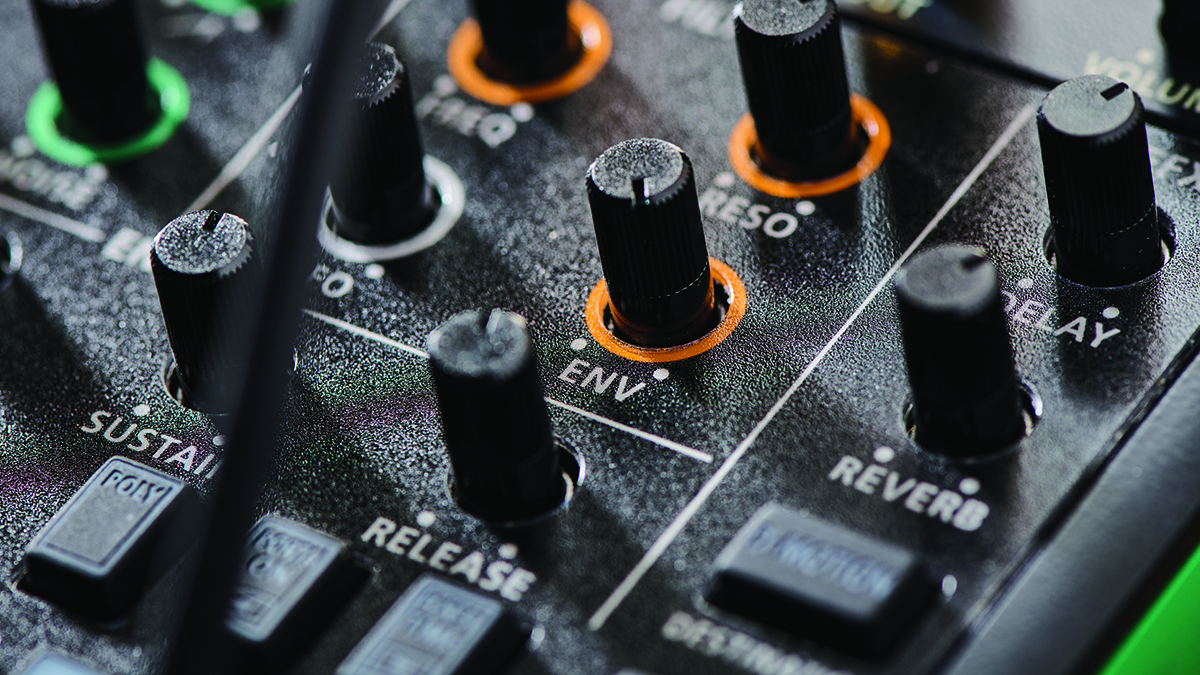
The surprising depth of the S-1 carries across to the sequencer, too. What looks at first like a simple button keyboard/sequencer is enhanced with features like per-step probability, sub step inputs, an arpeggiator, and automation of up to eight parameters for each step. Sequences can be up-to 64 steps, with options to add shuffle, loop selected steps and transpose the current pitch.
Another esoteric touch is D-Motion, which was also present on the recent SH-4d and allows users to modulate selected parameters by titling the unit. It’s a more usable feature here; given the small size of the S-1, it’s far easier to hold in one hand and tilt to change the sound whilst still playing or performing with your other hand.
A fun, pocket-sized addition to any studio
For such a small and well-priced instrument, it all adds up to a lot of power. It’s not without compromises – the small size means that important features, such as the chorus, portamento and delay feedback, are hidden amongst sub menus, and the controls can feel fiddly and imprecise at times. But there’s no doubt you get a lot for your money here; it can do a solid impression of SH-101 basses and leads, but is capable of chord stabs and swells and interesting digital tones too. Combined, this makes for a great first hardware synth or simply a fun, pocket-sized addition to any studio.
MusicRadar verdict: Deceptively handy and inventive, the S-1 is a great starter synth and much more than just another retro revival from Roland.
Roland S-1 Tweak Synthesizer: The web says
"It has plenty of hands-on controls, sounds great and is deceptively powerful for the price. But it is also, perhaps, too complex."
Engadget
Roland S-1 Tweak Synthesizer: Hands-on demos
MusicRadar
RolandChannel
Alamo Music Sound Lab
loopop
Andertons Synths, Keys and Tech
Roland S-1 Tweak Synthesizer: Specifications
- KEY FEATURES I/O: Audio out and in, pulse sync out and in, MIDI out and in (TRS), USB (for charging, MIDI and class compliant audio). 4-voice virtual analogue polysynth with 64-step sequencer. 64 pattern memory. Delay, reverb and chorus effects. Powered by rechargeable battery.
- CONTACT: Roland
I'm the Managing Editor of Music Technology at MusicRadar and former Editor-in-Chief of Future Music, Computer Music and Electronic Musician. I've been messing around with music tech in various forms for over two decades. I've also spent the last 10 years forgetting how to play guitar. Find me in the chillout room at raves complaining that it's past my bedtime.
“I called out to Mutt and said, ‘How about this?’... It was a complete fluke": How Def Leppard created a rock anthem - with a little bit of divine intervention
Baby Audio's Smooth Operator spectral balancing plugin goes pro
"It was ugly, like watching a divorce between four people. After a while, I had to get out": Beatles engineer Geoff Emerick on the recording of Abbey Road, track-by-track
